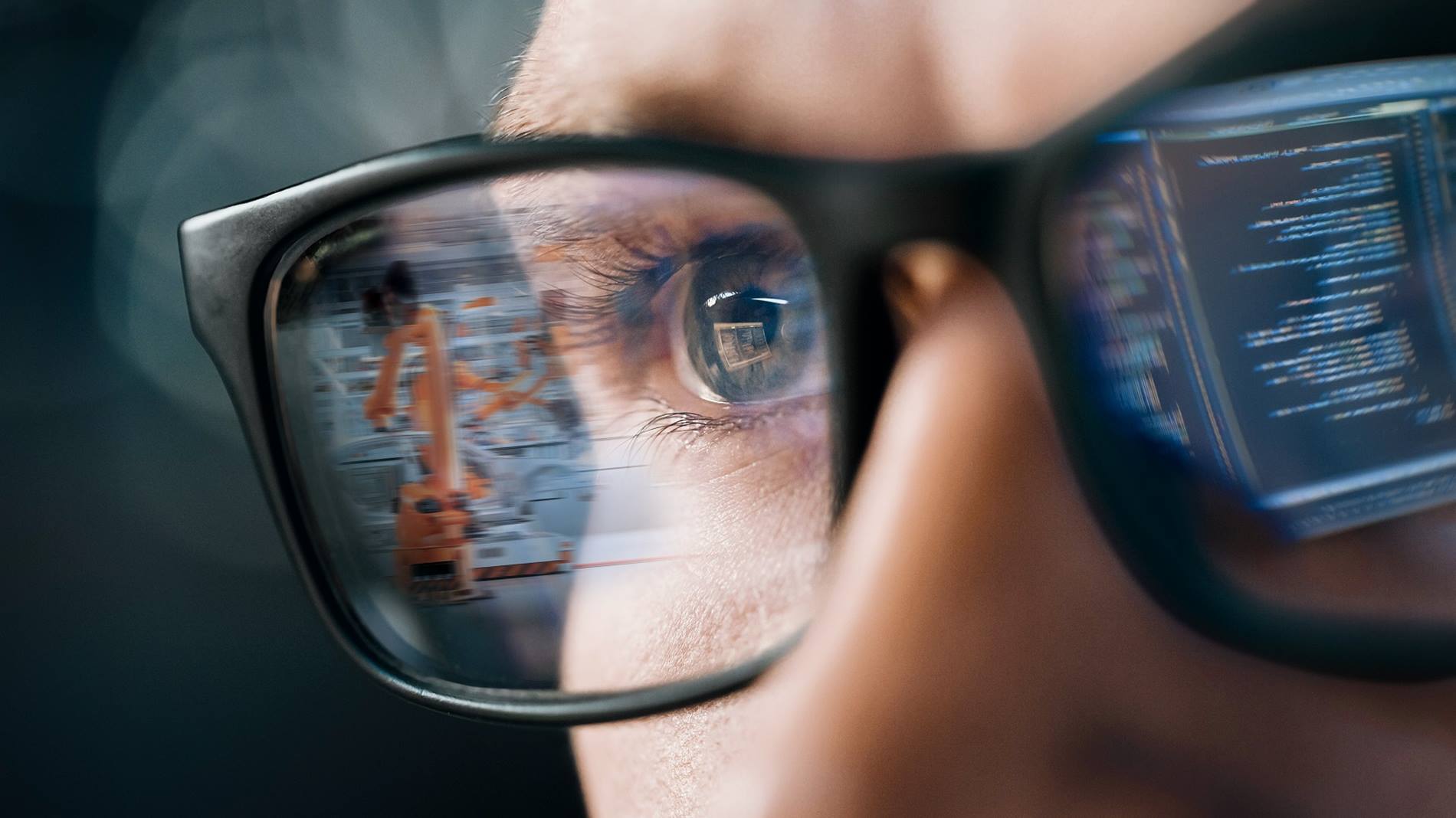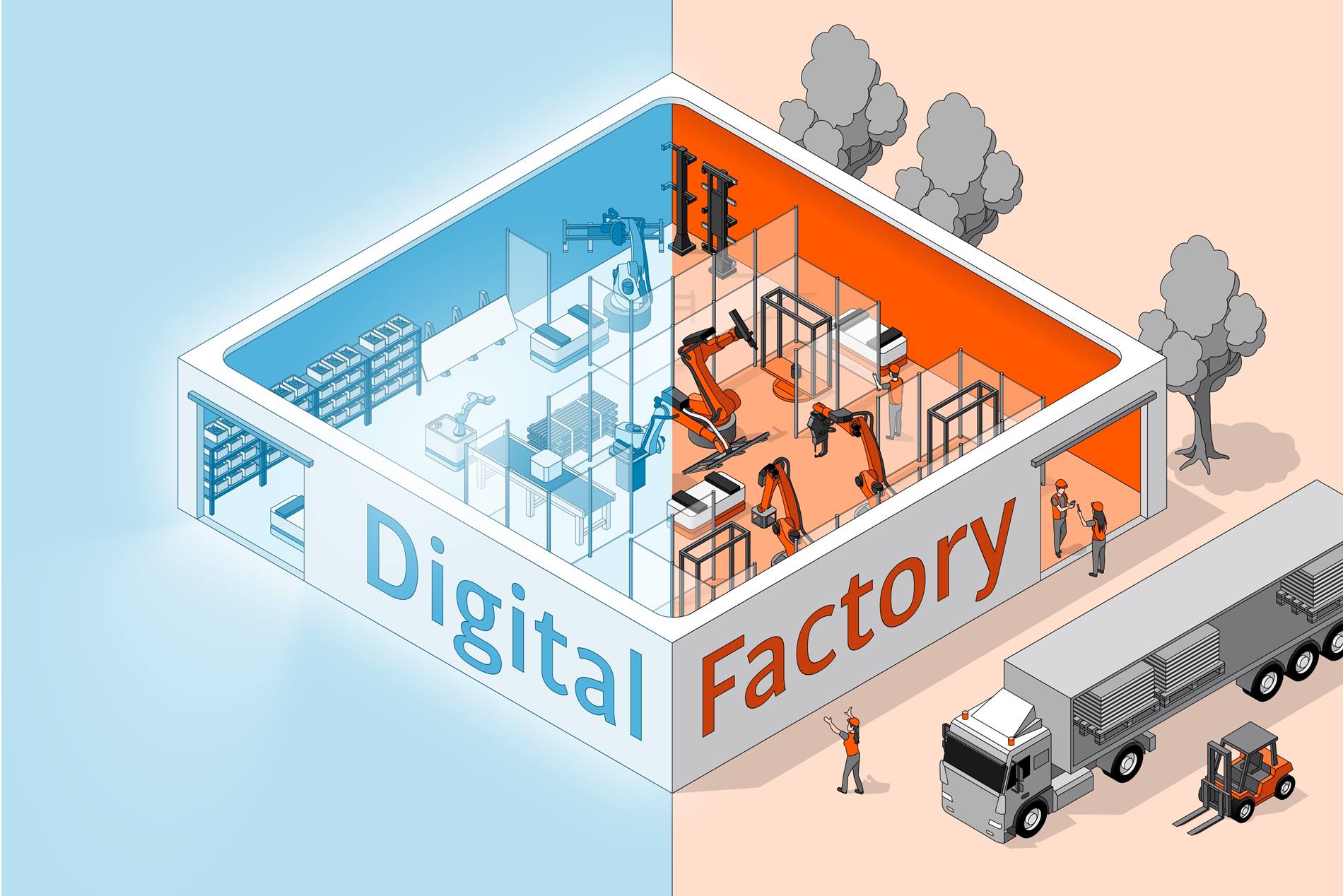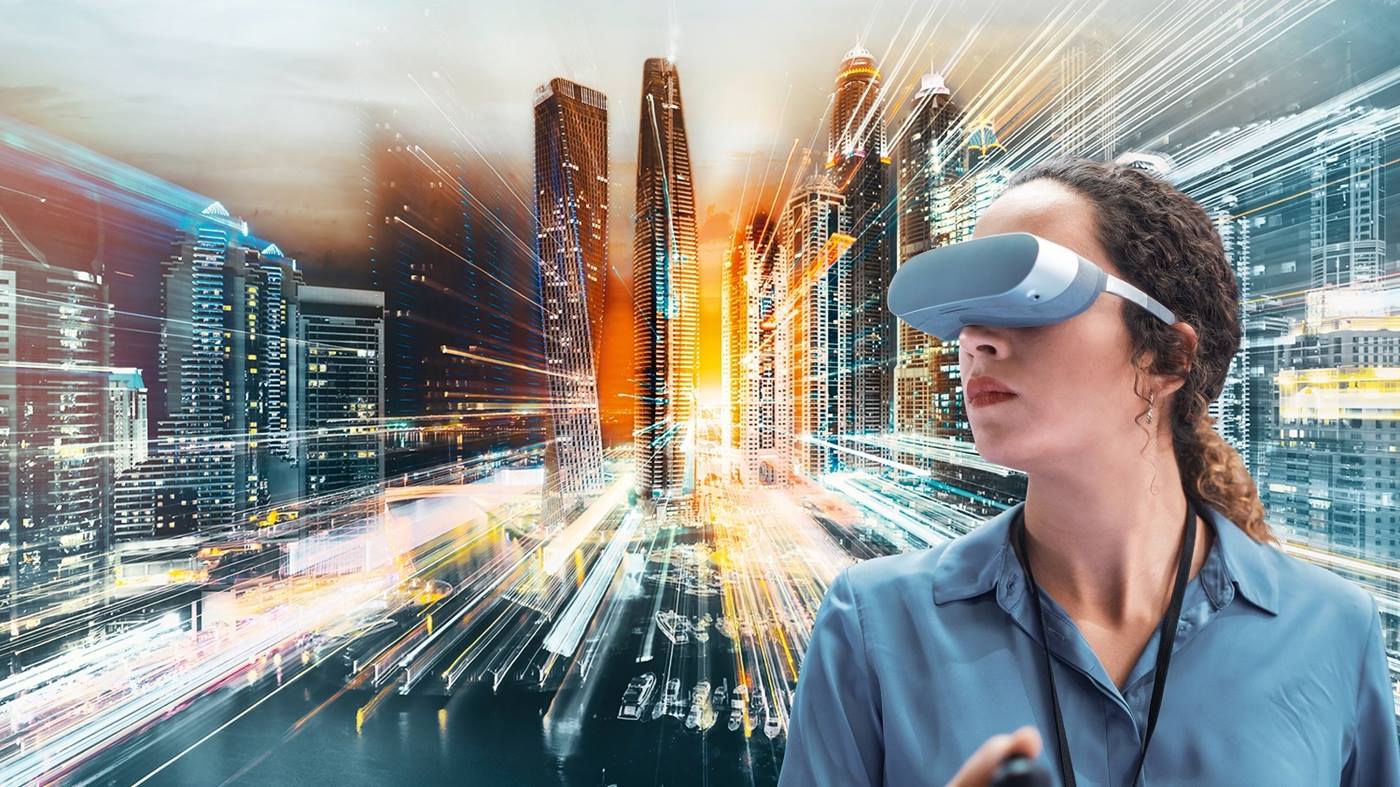Durée de lecture : 4 minutes
"If we deliver a system in five years, the digital twin will be included as a standard,” says Florian Groschup, Director Operations Controls at KUKA and an expert in digital twins, digital shadows and the complete Digital Factory in systems engineering. The Digital Factory covers everything: from quotation creation to the Smart Factory with software packages in the cloud. “Our customers can already see what the system currently looks like during the development phase – all simulated.” The digital twin forms the basis for this. It enables all available data to be collected and visualized easily and intuitively. KUKA uses the 3D simulation software from Visual Components as the basis for the digital twin and expands it with the knowledge of our robots to create KUKA.Sim. Digitalization and software are also increasingly involved in all other process steps: The share of virtual commissioning is increasing rapidly. Until now, it has been used primarily in complex stations and system components. In the future, it will be used in full to test the interaction of the individual components. “Following virtual commissioning, of course, it is once again the turn of the physical components made of iron and steel. Our industry can’t do without hardware,” explains Florian Groschup.
"Software as a service"as the ultimate challenge
If we think this digital influence on the process through to the end this means that even after the system has been put into operation on a customer’s premises, the digital twin is retained and continues to develop further in every detail – parallel to the real system. The ultimate challenge then is the continuous improvement of processes – be it in terms of conversions, cycle times, output or energy efficiency – using software packages from the cloud as “software as a service”. This is the seamless transition into the world of IoT: “Then it’s a matter of pure data analysis and system expertise. This is particularly interesting for the production systems in the home construction sector. Here, our customers still have little experience in automation and rely on us as specialists,” says Groschup.
Simulating the real
KUKA is working intensively to ensure that entire production systems are represented as a digital image beforehand. The advantages? Robot systems can be deployed more quickly and easily. Information about the performance of the system can be ascertained within minutes. All contractors involved in the planning of a robot system can communicate more easily with one another. This enormously reduces the risk to the project and the timeline. Seamless interfacing with other KUKA software is also possible. “With this development, we are finally able to offer a complete digital twin of our robot system,” says Roland Ritter, Platform Product Manager Simulation at KUKA. “This means that it is possible to start a robot project without having any hardware available, and still be able to rely on the results and behavior corresponding very closely to reality.”
Software is used, not sold
This is about more than just a simulation. The idea behind it is reflected in the market: it is no longer software that is sold, but the right to use it. Worldwide software access within minutes 24/7 is now a standard. Looking at the KUKA portfolio, this is to apply in particular to the technology packages within the simulation environment. A license is only required if the software is used on the real controller for industrial use with the robot. Trying out how the technology packages work and ascertaining whether they bring added value to a specific project can be achieved easily and at no additional cost within the simulation. What is needed for this is a place where the software is stored and distributed to customers. The KUKA Group IoT specialist Device Insight is developing precisely that: a service that is capable of uploading, managing and releasing hosted software for each required front end and also removing it again.
How is the market developing?
By 2027, the “Digital Twin Market Report 2023-2027” forecasts annual growth of around 30 percent in the global market for digital twins, with manufacturing being the largest industry with the strongest growth. Short-term factors which could act as a headwind, according to IoT Analystics, include inflationary pressures and weak economic prospects. Factors which could act as a tailwind, on the other hand, include labor-shortages, investments in digitalization, the convergence of artificial intelligence or machine learning and digital twins, sustainability and long-term transformation. Companies in East Asia and the Pacific are investing most heavily, accounting for 34 percent of global spending on digital twins in 2022. Europe and Central Asia accounted for 27 percent of global spending and North America 26 percent.
Industrial production facilities are turning into IT landscapes. Servers are lined up along the production lines and forward new software commands from the cloud directly to the hardware in the line. At the heart of it all is the robot – equipped with software packages and connected to the cloud – linking the digital world with the manufacturing world of hardware like no other product.













